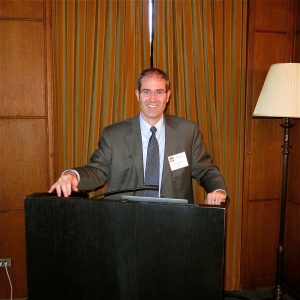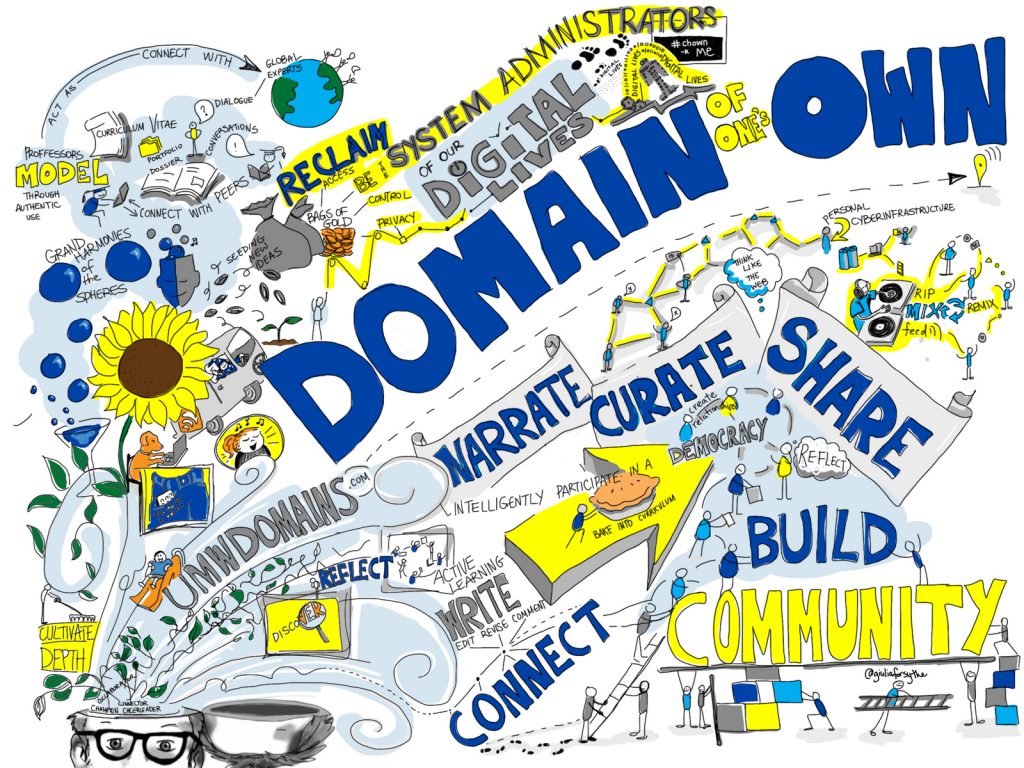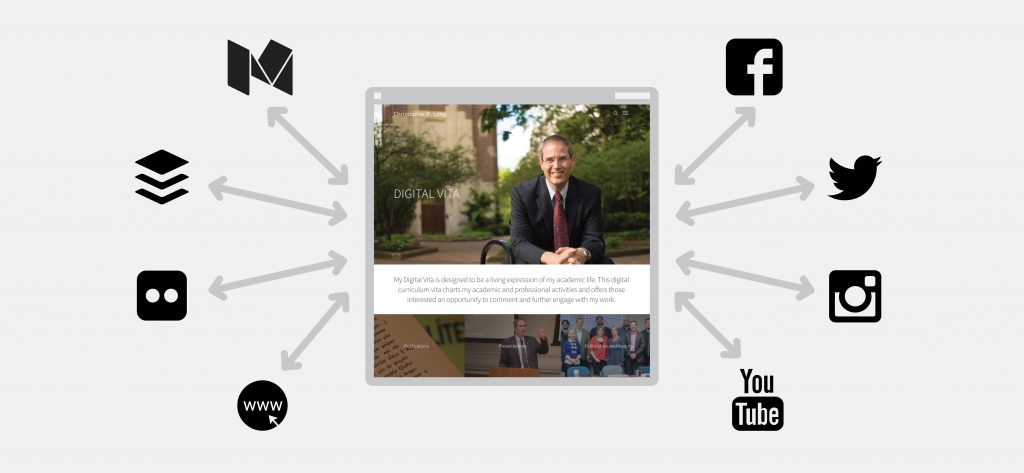By Dean Christopher P. Long on May 10, 2016 on cplong.org

In a way, it all began with this picture. I was attending my first Humanities, Arts, Science, and Technology Advanced Collaboratory (HASTAC) conference in Ann Arbor to talk about digital scholarship and I didn’t know many people.
I was committed to living out my fundamental commitment to use digital modes of communication to cultivate an academic community of scholarship around my ongoing work in philosophy, digital scholarly communication, and academic administration.
At the core of that commitment is this principle:
No academic activity without a digital artifact.
To put this principle into practice, you need pictures.

At HASTAC, this meant I needed to ask someone to take my picture. That is how I met Dean Rehberger, Director of Matrix, a Center for Digital Humanities and Social Science here at Michigan State University.
Since that time, we have collaborated on a $785K Mellon-funded grant to create the Public Philosophy Journal and I have come to Michigan State to serve as the Dean of the College of Arts & Letters.
I won’t say there is a direct causal connection here–though Dean was on the search committee. Rather, I tell this story to illustrate how a new set of relationships opened for me when I reached out to Dean to ask him to take my picture, relationships that have enriched my scholarship and opened connections that have led me here to Michigan State and to my position as Dean.
Don’t underestimate the power of serendipity.
Sharing your work online, especially in its early phases of development, can open new paths of inquiry and establish connections with scholars who can enrich your work.
And who knows, if the ties that bind your online community are tight and broad enough, your scholarship just might go viral.
To cultivate a robust and enriching online community, however, requires infrastructure and some strategic thinking.

Digital Vita
First, you need a domain of your own.
If the general principle here is “no academic activity without a digital artifact,” you need a place to host and curate the content you create. Think of it as a Digital CV, a living expression of your academic life. Just as you create, maintain, and update your paper curriculum vitae, you curate your living CV online.
A “curriculum vitae” is, literally, a course of life. Your digital CV should chart your academic and professional activities and offer those interested an opportunity to comment and further engage with your work.
Your digital CV is the beating heart of your online presence. It is a repository for your work; it’s a place to think and write and research in public with others. It feeds your social media sites and offers others a place to comment and engage with you. It is an archive and a space to make your scholarship openly accessible to others.

Public Scholarship
Often when I talk to faculty and students about cultivating a public online scholarly presence, I am met with trepidation. They worry that going public with their work too early will put them at a disadvantage, will expose their work before it is ready for public consumption. While I do not deny the need for quiet, private time for thoughts and reflection, those who keep their work locked down in private even at the early stages miss opportunities for insights and collaborations that become open to them when they share their work more broadly even in its inchoate stages.
There is a cultural shift at work here.
Young faculty and graduate students have long been advised to carefully guard how their work appears in public. Here I am not arguing for less care, but for the benefits of curated exposure at early stages so that by the time the work is ready for publication, a community of interested readers has already been cultivated.
Here are some suggestions about how and what to share:
- Blog your research process: by sharing what you are reading, initial reflections on new texts, or notes about interesting work in the field, you can open a dialogue on a subject that might lead others to respond with helpful insights and avenues of new investigation. As I was writing my book on Socratic and Platonic politics, I blogged about the challenges associated with creating an enhanced digital book, tagging the posts on my blog as “the evolving book.”
- Live-tweet conferences as a form of collaborative note-taking: I have written extensively about the art of live-tweeting, the Tweeting Graduate Student, and the value of using Twitter for collaborative note-taking.
- Use Storify to curate the tweets afterwards to embed them into your blog: here I curated my visit to and presentation at Muhlenberg College.
- Post published articles: increasingly journals are giving faculty rights to post on their personal websites post-production copies of their published articles. I make all my articles publicly accessible on my website, and I regularly tweet them out to facilitate discovery and increase the possibility that they will be read and cited.
- Host a podcast: I created the Digital Dialogue podcast to further my research by inviting scholars whose work I am reading to come onto the podcast to discuss their work. Some of the most transformative academic conversations I have had in my career are captured in the episodes of the podcast. Many of them are cited in my book on Socrates and Plato and are available in the enhanced digital version of the book.
- Use Buffer to live-tweet your own presentations: it is great when the audience live-tweets a presentation you are giving, but I have long tried to facilitate that process by live-tweeting my own presentations. This allows those who are listening to add value to the presentation on Twitter rather than focusing on trying to capture what I am saying. I used to use Keynote Tweet to do this, but more recently I have simply scheduled tweets in Buffer and used LiveTweetApp to launch and share tweets during a presentation. In fact, I have started to use Twitter itself as the presentation platform.
Ultimately, the point is to share your scholarship broadly and often so that it might be enhanced by the community you create, as my work was enriched that day in 2011 when I asked Dean to take my picture.
Originally published on Medium by Dean Christopher P. Long.